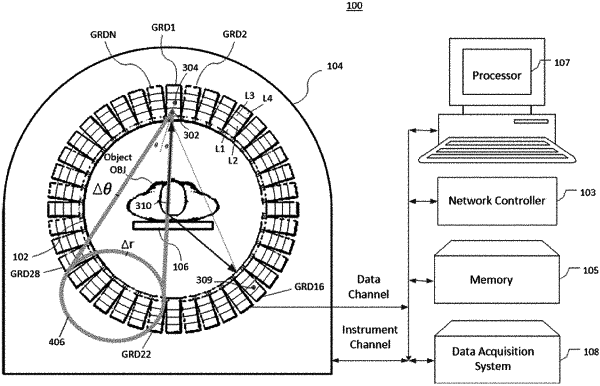| CPC A61B 6/5205 (2013.01) [A61B 6/037 (2013.01); G01T 1/172 (2013.01); G01T 1/248 (2013.01); G01T 1/249 (2013.01)] | 20 Claims |

|
1. A nuclear medical diagnostic apparatus, comprising:
first and second gamma ray detectors for detecting first and second annihilation gamma rays, respectively;
processing circuitry configured to
identify a possible coincidence event between the first gamma ray detector and the second gamma ray detector;
estimate a range of possible flight directions for the first annihilation gamma ray detected by the first gamma ray detector based on a Compton scatter event, which is detected by the first gamma ray detector, wherein the possible coincidence event includes the Compton scatter event detected by the first gamma ray detector;
determine whether the second gamma ray detector is located within the estimated range of possible flight directions; and
count the possible coincidence event as a true coincidence event when determining that the second gamma ray detector is located within the range of possible flight directions, and not count the possible coincidence event as a true coincidence event when determining that the second gamma ray detector is not located within the range of possible flight directions.
|